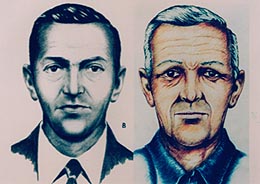
Samuel Taylor Coleridge’s famous poem “Kubla Khan” (“In Xanadu did Kubla Khan/A stately pleasure-dome decree”) is considered a high point of Romanticism, but it’s incomplete. Coleridge said he had seen the entire course of the poem in a dream, but was interrupted while writing it down:
On awakening he appeared to himself to have a distinct recollection of the whole, and taking his pen, ink, and paper, instantly and eagerly wrote down the lines that are here preserved. At this moment he was unfortunately called out by a person on business from Porlock, and detained by him above an hour, and on his return to his room, found, to his no small surprise and mortification, that though he still retained some vague and dim recollection of the general purport of the vision, yet, with the exception of some eight or ten scattered lines and images, all the rest had passed away like the images on the surface of a stream into which a stone has been cast, but, alas! without the after restoration of the latter!
To this day no one knows the identity of the “person from Porlock” or what his business was, but he left Coleridge with only 54 lines.



